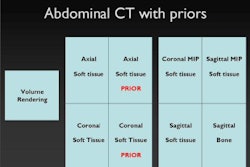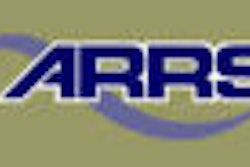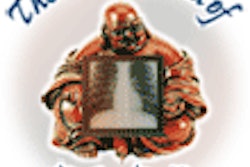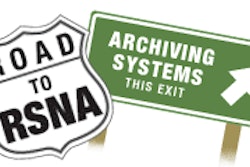Using a RIS/PACS network in a radiology department can substantially reduce x-ray exam completion times, according to research published online in the Journal of Digital Imaging.
"In principle, this can lead to an increase in the annual number of examinations, and a decrease in general costs," wrote a research team led by Caterina Mariani of Macerata Hospital in Macerata, Italy. "Moreover, the time needed for delivery of results can be reduced."
The Italian researchers collected data from two hospitals between September 2004 and January 2005; Macerata Hospital used an Impax PACS network and Elefante RIS (Agfa HealthCare, Mortsel, Belgium), while Jesi Hospital employed a traditional imaging system.
The researchers calculated aggregate exam time, including patient registration to delivery of results to the patient. (JDI, September 1, 2006). The authors measured exam times only for x-ray examinations without contrast, as these are a large percentage of radiological activity in both hospitals, they said.
In a traditional workflow model, mean time for a standard case was 29 minutes, 26 seconds (± 1 minute, 58 seconds) and 34 minutes, 7 seconds (± 2 minutes, 2 seconds) for a case that had a report with errors that needed to be retyped. Mean time was 39 minutes, 28 seconds (± 2 minutes, 14 seconds) for a case that had a report unavailable for delivery, which required searches for other reports and/or films to complete the process.
Under the digital workflow approach, however, total mean time was just 19 minutes, 6 seconds (± 40 seconds). As a result, PACS and RIS offered a 35% reduction compared with a standard case, a 44% reduction compared with the case that had a report with errors that needed to be retyped, and a 52% reduction compared with the case that the report was unavailable for delivery.
"This result seems very significant and leads to a number of possible interpretations," according to the authors.
The most significant time differences between the two models were found in execution and reporting. With digital radiography, the use of film and all film developing operations have been eliminated. In addition, bad images no longer require operators to perform the same examination again, only postprocessing perhaps multiple copies of the acquired image, according to the study team.
"The digital process also strongly influences the reporting step as a result of the following factors: a large number of tools to speed up and optimize the analysis of the image, as performed by the radiologist; the use of PC speech recognition; fast access to image database in case of comparison with previous examinations of the same patient; and the printing and signing of the report can be made practically at the same moment, directly from the radiologist," the authors wrote. "The whole process is filmless and paperless, avoiding also the need for people movements inside department."
While actual delivery time data were essentially the same between the two models, that reflects the time when the report is handed to the patient, according to the study team.
"If we take into account the time it takes to transfer the report from the department to the front office, the difference could be four days at the least (for the traditional radiology department)," the authors concluded.
By Erik L. Ridley
AuntMinnie.com staff writer
September 21, 2006
Related Reading
Filmless OR increases efficiency, workflow, August 29, 2006
Exam reconciliation tool improves PACS error handling, August 28, 2006
Part XII: Exploring PACS Secrets -- PACS and marriage, August 15, 2006
New workflow, personnel needed for adopting digital mammography, August 10, 2006
IHE's import reconciliation workflow eases portable media handling, July 17, 2006
Copyright © 2006 AuntMinnie.com



















